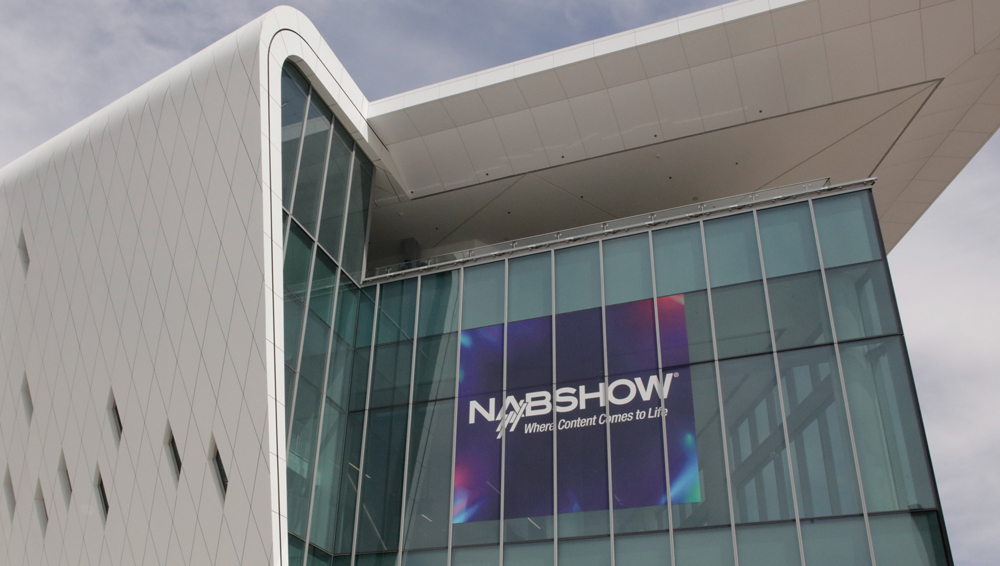
NAB Show Marks Centennial With Focus On Cloud, AI, NextGen TV

Next weekend, the broadcast industry will gather again in Las Vegas for the annual NAB Show, which runs April 15-19 at the Las Vegas Convention Center (LVCC) and spills over into separate meetings and private demonstrations at surrounding hotels (including TVNewsCheck’s Programming Everywhere conference at the Wynn on Apr. 16). NAB 2023 will be the second edition since the show had a two-year hiatus in 2020 and 2021 due to the COVID-19 pandemic. It will also mark the 100th anniversary of the first NAB gathering, held in New York in 1923.
Last year’s show outperformed what were admittedly low expectations across the industry. It drew 940 exhibitors and 52,468 attendees and was hailed as a great social reunion for both broadcasters and their technology suppliers. With another year of reduced COVID-19 impact and no vaccination requirements for NAB 2023, vendors are feeling optimistic, despite uncertainty in the broader economy. But they don’t expect the show to immediately jump back to 90,000 attendees and 1,600 exhibitors, if ever.
“As far as bookings, it’s looking great,” says Dielectric VP of Sales Jay Martin. “I think there are more groups going than last year, but they’re sending less people. I know CES did a lot better than last year, and I think NAB will too, but nowhere near the historical numbers.”
Value-added reseller Advanced Systems Group is taking over 100 people to the show, “an astronomical number” for the 425-employee company, says ASG President Dave Van Hoy. It will be Van Hoy’s 44th NAB.
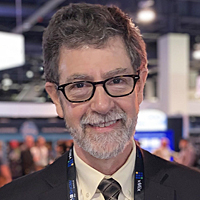
Dave Van Hoy
“I don’t have an open time slot between Friday and Tuesday night,” Van Hoy says. “The show is busy for us, and that’s a great sign. There are a lot of new products and technologies to talk about with both clients and vendors.”
Van Hoy is seeing some pullback from tech companies in the Silicon Valley area because of travel restrictions, but more New York and Los Angeles customers are making the trip.
“It looks like the participation rate of content creators will be very high,” Van Hoy says.
He sees cloud-based workflows and IP transport technologies like NDI and SRT as hot topics, along with “XR-type [extended reality] workflows” including AR and VR.
An Upward Trend
NAB currently has more than 1,000 exhibitors signed up and is expecting to land around 1,200 total, which would represent a 25% jump from last year. Total exhibit space will be up a similar percentage, rising from 500,000 net square feet last year to around 625,000 this year, says Chris Brown, NAB EVP and managing director of global connections and events.
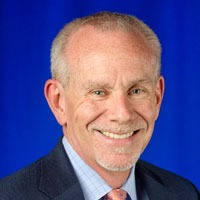
Chris Brown
While some vendors have popped back to the same size booths they had in 2019, many are keeping a smaller footprint and choosing to invest marketing dollars in sponsorships or hospitality suites. Brown is already in discussions with the 50 biggest exhibitors about their 2024 space, and a few are looking to increase their footprints.
“We’ve been pleasantly surprised there,” he says.
Attendance is pacing 16% above last year, with NAB expecting 62,000 to 65,000 total attendees. COVID’s impact kept international attendance down in 2022 to about 25% of the total. But international registrations are looking up this year, and currently represent 30%.
“We’re at just over 55 official delegations, which is a bigger number than we’ve had in a long, long time,” Brown says. “And we’re seeing Asian countries coming back with some pretty good delegations.”
Brown believes overall attendance will continue to grow, though he’s certainly not sure it will bounce back to pre-COVID levels by 2024 or 2025, if ever. And that may be just fine with many vendors.
“We had great feedback last year based on the dimensions of the show, where we had a number of vendors tell us this is great, these are the right people, this ratio of attendee to exhibitor really gives us a great chance to spend quality time with those people,” Brown says. “And we’re not all stressed out about standing in line for cabs and lunch and everything else.”
Focus On Content
Once again, the exhibition and companion conference will be organized into four “content pillars” with supporting theaters on the show floor: Create, Connect, Capitalize and Intelligent Content. “Create” will be spread among the North and Central Halls, while the other three pillars will all be in the spacious new West Hall.
Radio companies, which were spread among the three halls last year, have been consolidated in West this year. NAB has also created a “broadcaster district” in West, locating all of the meeting rooms and sessions relating to TV and radio managers there as well as its large member headquarters lounge. Broadcast Engineering and IT Conference sessions will be held in West as well.
“Everything for broadcasters centers in the West Hall, and we hope that creates better alignment and less confusion about where they should be,” Brown says.
But NAB attendees shouldn’t get too comfortable with the show’s current layout. NAB is losing use of the North Hall next year as the LVCC goes through renovations and will actually be moving part of its exhibition back into the South Hall for 2024 and 2025.
“So, we’re going to have a couple disruptive years there where we’ve got to slide things around a bit,” says Brown.
Last year was the first NAB where the exhibition ran Sunday to Wednesday, instead of Monday to Thursday. The initial premise was to bring some new attendees to the show, including West Coast professionals who could make NAB a short weekend trip.
NAB is keeping that schedule for 2024 based on initial feedback from attendees and exhibitors, which Brown characterized as mostly positive. He says early data shows the change drew some new attendees, though most vendors this reporter spoke with reported a slow Sunday. Brown says the change also helped better spread the traffic across four days, with Wednesday still holding onto about 40% of Monday’s traffic level. By comparison, Thursday used to have lighter traffic, at about 33% of Monday.
“We need to give it a three-year run to really see what trends really evolved from that,” Brown says.
Vendors Express Optimism
Sean Moran, COO of camera supplier Hitachi Kokusai Electric America, likes the new schedule and says Hitachi enjoyed better traffic from West Coast customers in 2022 than it had in the previous few editions.
Overall, 2022 traffic in Hitachi’s Central Hall booth “seemed a little light,” Moran says, particularly from European, Latin American and Asian customers. He is more optimistic about 2023 and is expecting a “good year, with good traffic flow.”
Like many vendors, Hitachi was impacted by supply chain problems in 2022. It was able to ship only 20% of orders due to shortages of components like sensors and capacitors.
The company struggled with cash flow until it was able to develop some new cameras designed around components it knew it could source, which allowed it to get product out the door. Delivery timelines have been cut from 120-150 days to 30-60 days, and Hitachi finished its 2022 fiscal year last month with a strong last quarter and met its financial quotas, Moran says.
Hitachi is unveiling several new products at NAB, including a 1080p camera that is upgradeable to 4K and super-slo-mo operation and a 4K box camera suitable for robotic installations. But the company will have a smaller booth than last year, and a much smaller booth than it did in 2019 — roughly one-half the size. Many vendors have downsized their booths due to broader changes in the industry, but Moran says Hitachi’s decision to go smaller was based on the limited impact the NAB’s hiatus from 2020-21 had on its orders. The company found other ways to market its products, including building a Los Angeles studio for virtual events.
“Our business didn’t skip a beat because of NAB,” he says. “It was no great loss for us we didn’t exhibit those two years.”
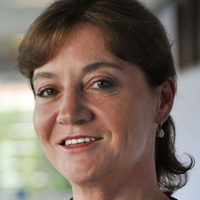
Barbara Spicek
Transmitter vendor GatesAir will be in a bigger booth in West Hall this year as it is exhibiting alongside Thomson Broadcast, which acquired it in August 2022. Almost 30 employees will be coming to NAB between the two companies, including new GatesAir CEO Barbara Spicek, a former NewTek executive. The booth will feature a full range of television, radio and digital audio broadcasting (DAB) products including an end-to-end demonstration of ATSC 3.0 that combines OTA and OTT streams.
Ray Miklius, GatesAir VP of EMEA sales, says the company is seeing good growth internationally from digital television conversions in Africa and Southeast Asia and DAB projects in Europe and the Middle East and has already booked key meetings for NAB.
“We’re expecting some significant international customers to come,” Miklius says.
Hot Topics: AI, AR, Cloud And 3.0
IP transport and content management vendor TVU Networks has doubled the size of its West Hall booth from last year. But at 20×20, it is still much smaller than the 60×60 space TVU occupied in 2019. That’s because customers place more value on conference room space for meetings than the show floor, says TVU CEO Paul Shen.
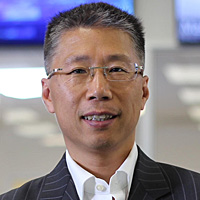
Paul Shen
With uncertainty in the economy and the lack of an election or big event like the Olympics, Shen is seeing some domestic customers pull back from traveling to NAB. But at the same time, he is seeing increased interest from international customers, particularly Latin America and Asia-Pacific.
“Last year, we hardly saw anyone from there,” Shen says. “As a whole schedule, we’re almost on par with last year.”
TVU used to exhibit in the South Hall, and Shen likes the proximity to cloud companies that West now affords. He says that given recent developments in generative AI, AI will be an important topic at NAB this year as broadcasters look to create content more quickly and at a lower cost. He notes that for several years TVU has been developing AI tools to accelerate the production process, such as AI-aided indexing.
“If you look at the entire media supply chain, from acquisition all the way to distribution, AI can do a lot of the work and make the production much more efficient,” Shen says.
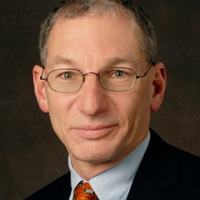
Jeff Birch
CBS Television Stations will have a smaller contingent at NAB than last year, with about a half-dozen staffers officially attending and perhaps a few more coming at their own expense. That is due to tighter travel budgets, says CBS Television Stations VP of Engineering Jeff Birch, a predicament shared by other broadcasters.
Birch was fine with NAB’s schedule change last year, as he says “your weekend is shot anyway” with traveling to Vegas. But he notes the show floor was pretty quiet on Sunday.
“It will be interesting to see this year if Sunday is more populated,” he says.
A top priority for Birch is evaluating augmented reality (AR) and virtual reality (VR) technology for CBS stations’ studios, as he is a “little tired of spending big dollars on hard sets” that only last a few years before they start to look worn and need to be refreshed. He would like to see if AR/VR technology has advanced to the point where a station could go for “half a set in the virtual world,” with the rest remaining a traditional hard set. The comfort level of both talent and guests in working with AR will be a key consideration in employing the technology.
The second item on Birch’s hit list is 1080p HDR technology for master control operations as CBS continues to launch 3.0 broadcasts across the group. CBS stations are on-air in 3.0 in a half-dozen markets right now and Birch hopes to double that by year-end.
Right now, those stations are upconverting 1080i to 1080p. When the CBS network starts to eventually deliver programming in 1080p HDR, Birch wants to make sure they are ready to deal with it. Today most stations aren’t, as they don’t have the 3-gigabit HD-SDI routers required to move an uncompressed 1080p HDR signal around the plant. Commercial playout systems are also currently 1080i, so stations will have to upconvert local interstitials to make them seamless with the network feeds, just as they did in the early days of the HD transition.
“Once we get there, most of the plants are old enough that they cannot pass the 1080p signal,” Birch says. “So, we will have to build a parallel path, and we absolutely have to figure out the most efficient way to do that.”
A third technology focus for Birch is “a perennial favorite,” and that is field acquisition gear and contribution systems.
“How do I get material from the field on-air as fast as I can, while also giving us the greatest amount of visibility around the group?” he says.

Mike Kralec
Sinclair Broadcast Group will have more than 50 people attending NAB between its corporate staff and regional engineering managers. Evaluating new technology is important for the company as there is “transformation in flight” in several areas across Sinclair, says Sinclair CTO Mike Kralec. That includes transforming all its existing media operations as well as developing a data distribution business using the new ATSC 3.0 standard. (Sinclair is making structural changes as well, as on Monday the company announced a reorganization of its various businesses including broadcast, private equity and real estate assets.)
“There’s a significant amount of support required at Sinclair for how we transform the media operations and how we transform via 3.0,” Kralec says. “In general, I’m looking at how we can leverage any technology, whether it’s AI or cloud technology in general, to optimize our media operations, separate from the data distribution side of things.”
While there is a tremendous amount of technology change occurring, Kralec says, two things are clear: the cloud isn’t going away, and neither are local stations. Sinclair has already transferred its content ingest and archive functions to the public cloud and has been working to migrate playout there as well. The company is expected to have further announcements regarding its cloud development efforts at the show, and Kralec will be evaluating different components of future station architectures including network transport for ground-to-cloud and cloud-to-ground connectivity.
Kralec says the appeal of the cloud isn’t just about avoiding new capital expenditures on traditional on-premise hardware. It’s more about gaining the flexibility to quickly pivot the business to pursue new opportunities.
“If we need to stand up this live event quickly, is our station connected and able to handle that?” he says.
While some vendors have grumbled about the new Sunday-to-Wednesday schedule for the show, Kralec says the exact timing of NAB is irrelevant to him.
“I’m fully engaged for that entire period of time,” Kralec says. “It could be Tuesday through Friday, but it’s my only focus for those days.”
































Comments (0)